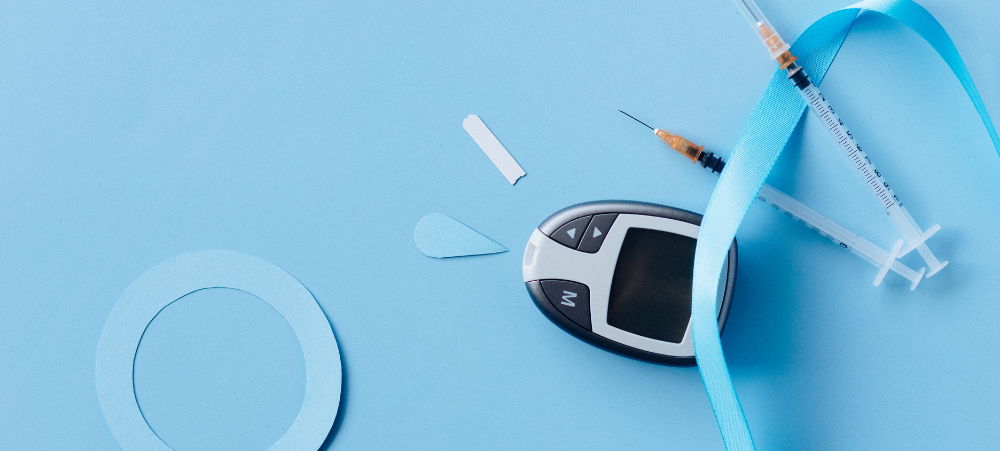South Africa is the most obese nation in sub-Saharan Africa*. It’s not surprising then that we also have the highest rate of Type 2 diabetes. The danger is that most people are unaware of the risk until they are diagnosed as pre-diabetic or Type 2 diabetics. Diabetes is the third most significant risk factor for disability and early death in South Africa. While 4.5 million South Africans are currently diagnosed with the condition, what’s more alarming is it’s estimated that 61% of diabetics remain undiagnosed.
The concern about the number of diabetics is not restricted to our country though. The International Diabetes Foundation predicts that by the year 2040, over 642 million people worldwide will be diagnosed with the disease. Lee Callakoppen, Principal Officer at Bonitas Medical Fund, together with the Scheme’s clinical team talks about diabetes and why a proactive and holistic approach to management of the disease is essential.
What is diabetes?
It is a disease that occurs when your blood glucose, also called blood sugar, is too high. Insulin – a hormone made by the pancreas – helps glucose from food get into your cells to be used for energy.
An overview
- Type 1 diabetes. Results from the body’s failure to produce insulin, the hormone that unlocks the cells of the body, allowing glucose to enter and fuel them
- Type 2 diabetes. With Type 2 diabetes, the more common type, your body does not make or use insulin well
- Pre-diabetes. This means that your blood sugar is higher than normal but not high enough to be called diabetes. If you are at risk for Type 2 diabetes, you may be able to delay or prevent developing it by making some lifestyle changes
- Gestational diabetes. Is diabetes diagnosed, for the first time, during pregnancy (gestation)
10 early signs of diabetes
The symptoms of diabetes are usually so mild that they can easily go unnoticed. This results in many diabetics being unaware of their condition until they are diagnosed with Type 2 diabetes. Fortunately, diabetes is a manageable condition, especially if diagnosed early. Here are 10 early signs you can look out for:
#1 Frequent urination
When your blood sugar is elevated, the kidneys can’t keep up with the amount of glucose in your system, allowing some of it to go into your urine. This results in you having to urinate more often than usual.
#2 Increased hunger and thirst
Diabetics usually don’t get enough energy from their food, which leads to a craving for more food. The frequent urination is also likely to cause dehydration and lead to you feeling thirstier than normal.
#3 Pain and numbness
If you have Type 2 diabetes, you might experience numbness in your hands and feet. This is usually a sign of nerve damage or diabetic neuropathy and is usually after years of living with diabetes.
#4 Dry Mouth
A dry mouth is one of the most common symptoms of diabetes. Symptoms may include: Trouble chewing, swallowing or speaking, dry, cracked lips, sores or infections in the mouth or a furry, dry tongue.
#5 Blurred vision
High sugar levels in the blood can damage the tiny blood vessels in the eyes, causing fluid to seep into the lens of the eye, potentially causing blurry vision.
#6 Yeast infections
Yeast feeds on glucose, so having plenty of glucose around makes it thrive. Yeast infections usually grow in warm, moist areas of skin, like between fingers and toes, under breasts and in or around sex organs.
#7 Slow healing cuts and wounds
Over time, high blood sugar levels narrow your blood vessels, slowing blood circulation and restricting much needed nutrients and oxygen from getting to the wounds. As a result, even small cuts and wounds may take weeks or months to heal.
#8 Skin discolouration
Insulin resistance can cause patches of darker skin to form on creases of the neck, armpits, groin area or over the knuckles. This condition, known as acanthosis nigricans, can be a result of diabetes. The skin in the affected area also becomes thickened.
#9 Fatigue
Diabetes-related fatigue is caused by fluctuating blood glucose levels resulting in not enough glucose for the body’s energy supply.
#10 Weight loss
Losing weight without trying to, can be a warning sign of diabetes. When your body can’t get energy from your food, it will start burning muscle and fat for energy instead, resulting in weight loss even though you haven’t changed your eating habits.
Holistic treatment and management of diabetes critical
Over the past few years, the Council for Medical Schemes (CMS) cited an increased prevalence of chronic conditions, diabetes in particular, as one of the key contributors to a rising disease burden and escalating healthcare costs. ’To offset this growing disease burden and proactively empower patients with diabetes to take control of their health, Bonitas has developed an integrated, holistic programme that is based on the specific needs of members with diabetes,’ says Callakoppen.
Diabetic co-morbidities – a higher risk
Individuals with diabetes often have other chronic conditions (co-morbidities) – such as high blood pressure, high cholesterol, heart disease and depression. This fact greatly increases the risk of diabetics developing complications such as nerve damage, eye problems, kidney damage as well as problems in pregnancy. To manage diabetes effectively, all the other conditions and complications must be managed as well. A key feature of the Bonitas diabetes programme is that it manages each individual’s unique mix of disease and lifestyle factors, rather than a standard approach to managing a specific disease.
Diabetes Management
Complications of diabetes must be prevented by ensuring access to proper treatment such as specialised diabetes’ doctors, paediatricians, podiatrists, diabetic educators to help manage the diabetes. Diabetics need to understand their condition and be empowered to make the right decisions to stay healthy.
Containing the risk
‘We believe the way forward is an increased focus on prevention, lifestyle changes, coordination of care by doctors and the utilisation of evidence-based disease management interventions,’ says Callakoppen. ‘The Bonitas clinical team uses an innovative Emerging Risk predictive model and screening algorithms to identify pre-diabetics as well as members likely to develop complications and other serious conditions.
‘We work with healthcare professionals to create an environment that supports them to optimise clinical outcomes. Together we can help members at high risk so that they can proactively improve their health and reduce the chances of developing complications and additional conditions.’
*These are the findings of the Lancet study, which was conducted by the Institute for Health Metrics and Evaluation at the University of Washington. These results correlate with a Medical Research Council study, which found that 61% of the South African population is overweight or obese.
For 2025 we have a renewed Female Health Programme:In collaboration with CareWorks, it’s accessible to all female members aged 18 and above, with an emphasis on preventative care and early detection of female-specific health issues. In addition, we have an enhanced Maternity Programme to support expecting mothers. This includes early identification of and weekly engagement for high-risk pregnancies, post-childbirth care and associated mental health follow-up calls for new mums, given the prevalence of pre and postnatal depression. Also, milestone reminders for children under 3 and cover for antenatal vitamins through savings, day-to-day benefits or the Benefit Booster
Bonitas Medical Fund
0860 002 108
View Website: www.bonitas.co.za
- Mental health matters during the festive season: Let’s normalise getting help - December 11, 2025
- Neonatal jaundice, what is it and what happens if my baby is born with it? - December 8, 2025
- Smoking and pregnancy – should I quit - December 4, 2025





